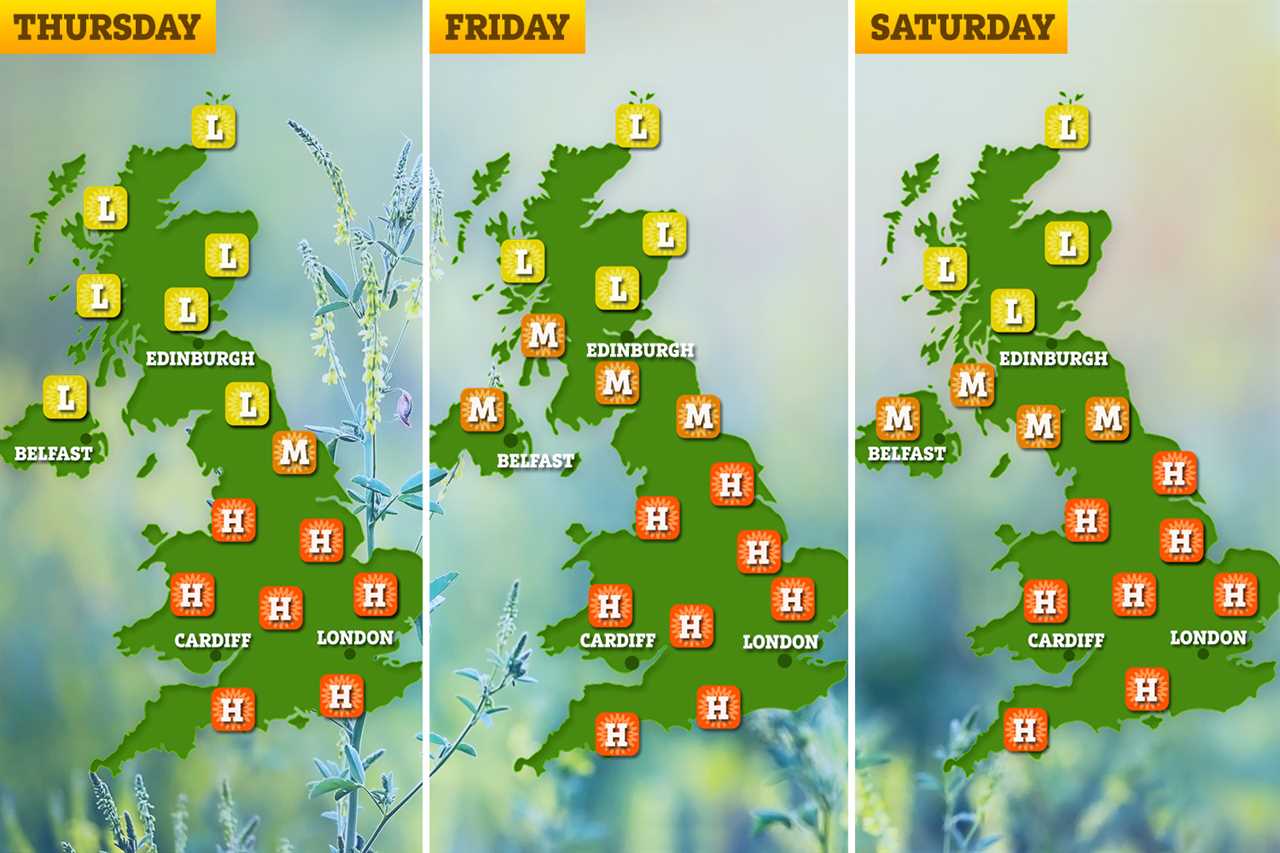A POLLEN bomb has hit Brits today, causing misery for hay fever sufferers.
But with symptoms similar to Covid-19 – how can you spot the difference between the virus and common hay fever signs?

As pollen counts soar this weekend it’s important to know the difference between hay fever and coronavirus
Temperatures are set to rise from today, which means pollen counts will also be through the roof in most areas.
The forecast for pollen is high across most of England and Wales this weekend.
For hay fever sufferers, itchy eyes, sneezing and a runny nose are all common symptoms.
But there are some symptoms that also cross over with Covid-19, such as a runny nose, sore throat and a cough.
A runny nose is now one of the most common symptoms of Omicron.
Although a cough is common in both illnesses, there will be differences between the two.
If you have hay fever it’s likely your cough will feel tickly and dry – whereas if you have Covid it’s likely to be a more persistent cough with at least three coughing episodes in one day.
Free tests have now been scrapped in England, but if you want to know for certain if you have the sniffles or the virus you can buy a single test for around £1 or a pack for about a tenner.
It is also advised you stay at home if you have any symptoms of Covid – which the NHS says includes a runny nose, headache or fatigue – have a high temperature or you do not feel well enough to go to work or do normal activities.
Professor Tim Spector, lead on the Zoe Covid Symptom Study, said: “The runny nose seems to be creeping up every time I look it’s higher – 83 per cent of people with Covid at the moment have runny nose.”
The top 20 Omicron symptoms include fatigue, sore throat, headache, sneezing, hoarse voice, eye soreness and unusual muscle pain.
With rising pollen levels, people who get hay fever are going to find it difficult to know if they have their usual spring reaction or are more ill.
Today pollen levels are high across the South West, London and the South East, the East of England, the East Midlands, West Midlands, Wales, Yorkshire and the Humber and the North West.
Levels are low in every other region, aside from the North East which will experience mild pollen levels.
These high levels will continue across the country until Sunday, with levels returning to more stable levels on Monday.









